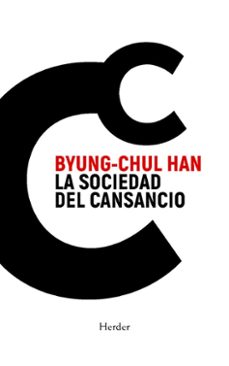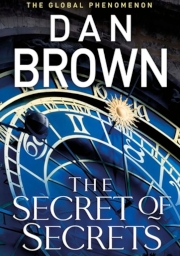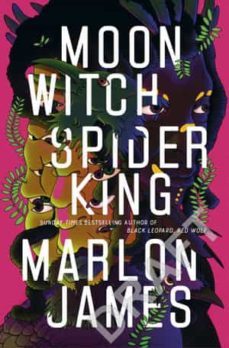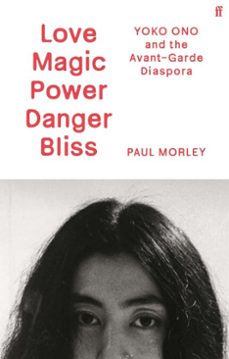Imprescindibles
Más vendidos Libros más leídos eBooks más leídos Todos los libros Todos los libros Autores destacados Series y sagas
Recomendados Libros recomendados Autores destacados Libros que inspiran Vidas con historia LGTBIQ+ English books
Ficción
Literatura Contemporánea Estudios literarios Clásicos Cuentos Poesía Teatro Libros de bolsillo Sagas literarias
Géneros literarios Novela romántica y erótica Novela negra Novela histórica Narrativa fantástica Novela de ciencia ficción Novela de terror Narrativa de humor Narrativa de viajes
No Ficción
Ciencias y tecnología Biología Ciencias Ciencias naturales Divulgación científica Informática Ingeniería Matemáticas Medicina Salud y dietas Formación Idiomas Estilo de vida Libros de Cocina Guías de viaje Narrativa de viajes Deportes Libros de Juegos Manualidades
Humanidades Autoayuda y espiritualidad Ciencias humanas Derecho Economía y Empresa Psicología y Pedagogía Filosofía Sociología Filología Biblioteconomía Estudios filológicos Estudios lingüísticos Estudios literarios Historia y crítica de la Literatura
Infantil
Juvenil
#Jóvenes lectores Narrativa juvenil Clásicos adaptados Libros Wattpad Libros Booktok Libros de influencers Libros de Youtubers Libros Spicy Juveniles Libros LGTBIQ+ Temas sociales Libros ciencia ficción Libros de acción y aventura Cómic y Manga Juvenil Cómic Juvenil Manga Shonen Manga Shojo Autores destacados Jennifer L. Armentrout Eloy Moreno Nerea Llanes Hannah Nicole Maehrer
Libros de fantasía Cozy Fantasy Dark academia Hadas y Fae Romantasy Royal Fantasy Urban Fantasy Vampiros y hombres lobo Otros Misterio y terror Cozy mistery Policiaca Spooky Terror Thriller y suspense Otros
Libros románticos y de amor Dark Romance Clean Romance Cowboy Romance Mafia y amor Romance dramatico Romance dramatico Romcom Sport Romance Otros Clichés Enemies to Lovers Friends to Lovers Hermanastros Slow Burn Fake Dating Triángulo amoroso
Cómic y Manga
Novela gráfica Novela gráfica americana Novela gráfica europea Novela gráfica de otros países Personajes, series y sagas Series y sagas Star Wars Superhéroes Cómics DC Cómics Marvel Cómics otros superhéroes Cómics Valiant
eBooks
Literatura Contemporánea Narrativa fantástica Novela de ciencia ficción Novela de terror Novela histórica Novela negra Novela romántica y erótica Juvenil Más de 13 años Más de 15 años Infantil eBooks infantiles
Humanidades Autoayuda y espiritualidad Ciencias humanas Economía y Empresa Psicología y Pedagogía Filosofía Historia Historia de España Historia Universal Arte Cine Música Historia del arte
Ciencia y tecnología Ciencias naturales Divulgación científica Medicina Salud y dietas Filología Estudios lingüísticos Estudios literarios Historia y crítica de la Literatura Estilo de vida Cocina Guías de viaje Ocio y deportes
Preventa de eBooks de Historia general del arte
Te puede interesar
Categorias
Filtros
Del 1 al 6 de 6
ORTIZ DE ZÁRATE, PABLO
Ediciones Destino 9788423369065
El arte como bálsamo para el alma Ver arte no es solo una experiencia estética, también es una poderosa herramienta para comprender nuestras emociones. Si sabemos cómo mirarlo, un cuadro puede convertirse en una guia para atravesar momentos dificiles. Pablo Ortiz de Zarate lo sabe bien, porque ademas de ser un periodista especializado en arte, sufrio una depresion. Durante su proceso de recuperacion se dio cuenta de que los tres pilares fundamentales de la salud mental vivir el presente, desarrollar empatia y afrontar la ansiedad pueden trabajarse a traves del arte.Este libro nos revela como contemplar las obras de arte para extraer su poder terapeutico y por que algunos cuadros son considerados autenticas obras maestras y otros, mas espectaculares, no. A partir de una metodologia sencilla descubriremos el mensaje oculto de las imagenes centrandonos en los objetos, las personas sus ojos y manos y los elementos intangibles. Aqui se esconden los secretos para cultivar una mente mas sana y una vida emocional plena.Una inyeccion directa de bienestar en nuestra mente.
Ver más
eBook
TITI, CATHARINE y Katia Fach Gómez
Ediciones Península 9788411004398
¿A quién pertenecen los mármoles del Partenón o el busto de Nefertiti? La historia de cómo el imperialismo y el colonialismo llenaron nuestros museos.Detrás de muchas de las obras que admiramos cuando visitamos el Louvre, el Museo Britanico o el Met de Nueva York se oculta un pasado incomodo. Son piezas que desaparecieron de su lugar de origen, arrancadas de templos, tumbas o palacios, y que hoy se siguen reclamando.Durante siglos, los grandes museos reunieron objetos procedentes de todos los rincones del planeta convencidos de estar preservando el patrimonio de la humanidad. Pero tras esa apariencia de universalidad se esconde una historia de conquistas, expolios y apropiaciones que todavia proyecta su sombra sobre nuestras instituciones culturales.Este libro sigue el rastro de seis piezas emblematicas de los marmoles del Partenon al penacho de Moctezuma, los bronces de Benin y el busto de Nefertiti para contar, con rigor y claridad, como llegaron a las salas de exposicion en las que reposan y para abrir el debate sobre su restitucion.
Ver más
eBook
Batsford 9781849943239
Stunning watercolour title new in paperback. Leading watercolourist reveals the secrets behind his atmospheric, light-filled paintings. Watercolour is ideal for capturing the transient effects of light and, with compact and lightweight materials, is the perfect medium for plein-air painting. Leading watercolour painter David Curtis is a strong advocate of working on site, observing and capturing changing conditions and effects. In this beautifully illustrated book, he explains in detail his two main methods for working on location for quick, loose studies and for more controlled and detailed paintings. He also shows how to collect reference material on the spot and develop this into resolved paintings back at the studio. He provides helpful instruction on interpreting light effects, with strong guidance on choosing materials, exploring techniques, composition, tone and colour and associated topics. This invaluable advice is complemented by a wealth of sketches, finished works and step-by-step demonstration paintings to illustrate different points and inspire further ideas. Reference Light and Mood in Watercolour hardback (9780713489552) Leading watercolourist reveals the secrets behind his light-filled paintings How to work en plein air to capture the transient effects of light How to collect reference material on location but paint in the studio Bestselling title new in paperback
Ver más
eBook
FELDMAN, JULES PELTA
Hatje Cantz Verlag GmbH 9783775755597
Where is Charles Simonds? Throughout the 1970s, his diminutive Dwellings, tiny architectural ruins of an imaginary civilization, could be found throughout the crumbling infrastructure of downtown New York. Preoccupied with the relationship between the grown and the built, the archaeological and the urban, Simonds shared friendship and ideas with Gordon Matta-Clark and Robert Smithson. Like Lucy Lippard, with whom he lived during that decade, Simonds believed in combining art and activism, always preferring what he called the "real world" to the art world. Yet despite taking part in many of the seminal exhibitions and art events of 1970s New York, Simonds has left few traces on art history. In order to explain Simondss absence while simultaneously arguing for his central place within it, Jules Pelta Feldman reconsiders the decades self-conception, finding that Simonds exemplifies much of what has been ignored in 1970s artand much of what establishes it as a unique period of experimentation and possibility.
Ver más
eBook
FELDMAN, JULES PELTA
Hatje Cantz Verlag GmbH 9783775755580
Where is Charles Simonds? Throughout the 1970s, his diminutive Dwellings, tiny architectural ruins of an imaginary civilization, could be found throughout the crumbling infrastructure of downtown New York. Preoccupied with the relationship between the grown and the built, the archaeological and the urban, Simonds shared friendship and ideas with Gordon Matta-Clark and Robert Smithson. Like Lucy Lippard, with whom he lived during that decade, Simonds believed in combining art and activism, always preferring what he called the "real world" to the art world. Yet despite taking part in many of the seminal exhibitions and art events of 1970s New York, Simonds has left few traces on art history. In order to explain Simondss absence while simultaneously arguing for his central place within it, Jules Pelta Feldman reconsiders the decades self-conception, finding that Simonds exemplifies much of what has been ignored in 1970s artand much of what establishes it as a unique period of experimentation and possibility.
Ver más
eBook
MORLEY, PAUL
Faber & Faber 9780571379262
Art is my life and my life is art . . .The story of the twentieth-century avant-garde is a story of resistance, of the outsider, of strangeness, of individual freedom, of rejecting the ordinary and overcoming marginalisation through self-invention. It is also a story that can be told through the prism of one of its most renowned figureheads: Yoko Ono.From her early life escaping aristocratic Japanese society and the horrors of World War II to adventurous and productive exile in New York, Onos work built upon the histories of Dada, surrealism, Zen Buddhism, and experimental music. A significant influence on the elusive Fluxus artistic network, she was connected to all its major personalities. Pursuing dreams of revolutionary liberation and aiming to recreate shattered post-war reality through performance, art and text, she established a legacy - despite her tumultuous personal life - as one of the most visionary artists and activists of her generation.Marking the intersection of biography, cultural history and artistic meditation, Love Magic Power Danger Bliss explores the deep history and vitality of the 20th century avant-garde movement and the inspiring, provocative figure who became its most celebrated, most misunderstood icon.
Ver más
eBook
Del 1 al 6 de 6


![harry potter y el cáliz de fuego (harry potter [ediciones ilustra das interactivas] 4)-j.k. rowling-9788419868497](https://imagessl7.casadellibro.com/a/l/s5/97/9788419868497.webp)





























